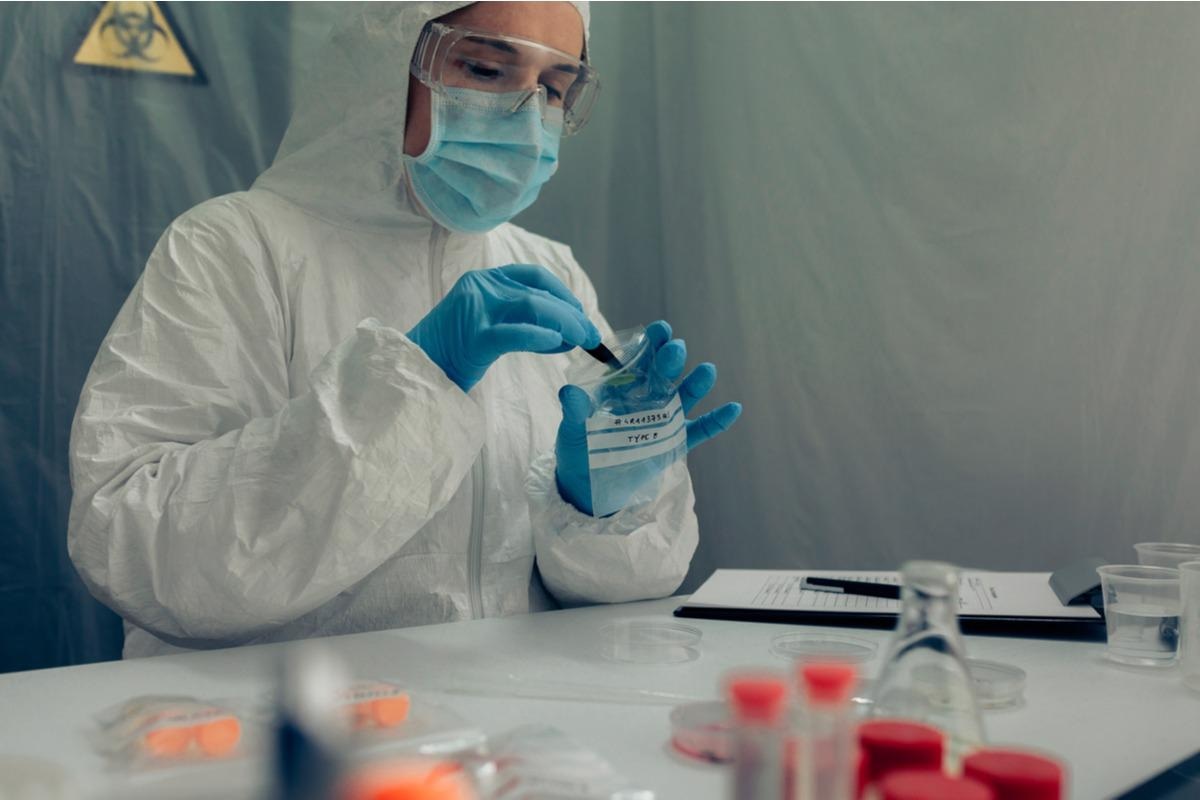 By Sam HancockReviewed by Danielle Ellis, B.Sc.May 9 2022
By Sam HancockReviewed by Danielle Ellis, B.Sc.May 9 2022Fomites are droplet-contaminated surfaces that may play a role in the transmission of coronavirus disease 2019 (COVID-19). Early during the pandemic, washing items entering the house became popular to remove severe acute respiratory syndrome coronavirus 2 (SARS-CoV-2). However, the ability of fomites to contribute to the spread of the disease is still controversial, and most researchers have begun to downplay the likelihood of infection through fomites. In a study published in The Journal of Infectious Diseases, researchers have been investigating the role of fomites in SARS-CoV-2 transmission.
 Study: Low risk of SARS-CoV-2 transmission by fomites – a clinical observational study in highly infectious COVID-19 patients. Image Credit: David Pereiras/Shutterstock
Study: Low risk of SARS-CoV-2 transmission by fomites – a clinical observational study in highly infectious COVID-19 patients. Image Credit: David Pereiras/Shutterstock
About the study and findings
To investigate, the researchers gathered individuals treated in hospital with confirmed SARS-CoV-2 infection and high viral load, who were then asked to forcefully cough into nine steel carriers, and moisten another nine with their mouths. These carriers were then placed in containers and transported on ice to a university laboratory, where they were used to inoculate VeroE6 cells.
Fifteen individuals between 39 and 89 years old were recruited, all of which had risk factors for severe COVID-19. Three patients had two risk factors, while most other individuals had between 3 and 6 risk factors. On the day of the study, 60% of the recruited individuals had only mild symptoms, and nasal oxygen support was required by only seven patients. No individuals were vaccinated. During follow-up examinations, ten patients had suffered from worsening clinical symptoms, two patients had died from COVID-19, and one patient had died with COVID-19.
Generally, those admitted with higher levels of lactate dehydrogenase, leucocytes, and C-reactive protein on admission were significantly correlated with more severe COVID-19 infection. No correlation between COVID-19 severity and other well-known predictors was discovered, including age, alanine aminotransferase, aspartate aminotransferase, procalcitonin, or D-dimers.
All patients had their viral load determined using reverse-transcriptase polymerase chain reaction (RT-PCR) analysis of nasopharyngeal and oropharyngeal swabs prior to sample acquisition. Variants present included wild-type in 10 patients, Alpha in four patients, and Beta in one.
The pangolin tool was used for deep sequencing to confirm the lineage assignment for fourteen samples, with variant patterns identified by the investigation of the spike domain. Two samples were excluded from the study due to contamination. All of the remaining samples clearly showed viral RNA detection, and following inoculation with the swabs, viral loads in cells ranged between 2x10^1 to 2x10^9RNA copies/50ng. Some patients showed significantly lower viral loads and did not have swab samples resulting in productive viral infection.
The steel carriers that had been contaminated via moistening with saliva resulted in visible cytopathic effect (indicating virus infection) and detectable viral RNA within cells in six out of 13 cases. . While there was no visible cytopathic effect from patients six and ten, viral RNA was still detected in cells and supernatant. Five out of 13 steel contained recoverable infectious virus. In some patients, infectious virus could be recovered 240 minutes after incubation. Viral RNA could be detected within five of the cellular samples from the steel carriers that patients had contaminated via forceful coughing, but no cytopathic effect could be seen.
The low study population makes it difficult to form any strong conclusions from this study. In an investigation into the transmission of the disease, taking only hospitalized individuals with a high viral load significantly narrows the scope of the study. The lack of correlation between severe COVID-19 and age suggests that the limited size of the study could significantly reduce the statistical strength of the research, as much larger scale cohort studies have seen contrasting results.
As well as this, no statistical analysis is reported on the difference between steel carriers that patients coughed into compared to steel carriers moistened by saliva - and as only one additional carrier contained viral RNA it seems unlikely that the difference is significant. While the difference in visible cytopathic effect is more telling, it is difficult to quantify reliably without any figures on this effect. The presence of contamination in several samples is also unencouraging.
Conclusion
The authors conclude that their study provides evidence that fomites are not as critical in the transmission of the disease as they had previously assumed, as well as showing that infectious SARS-CoV-2 virions can be recovered on some fomites for a relatively brief period following contamination with large volumes of saliva. They advise following the common hygiene practices recommended by nearly every government during the pandemic to reduce the risk of surface contamination and viral transfer.